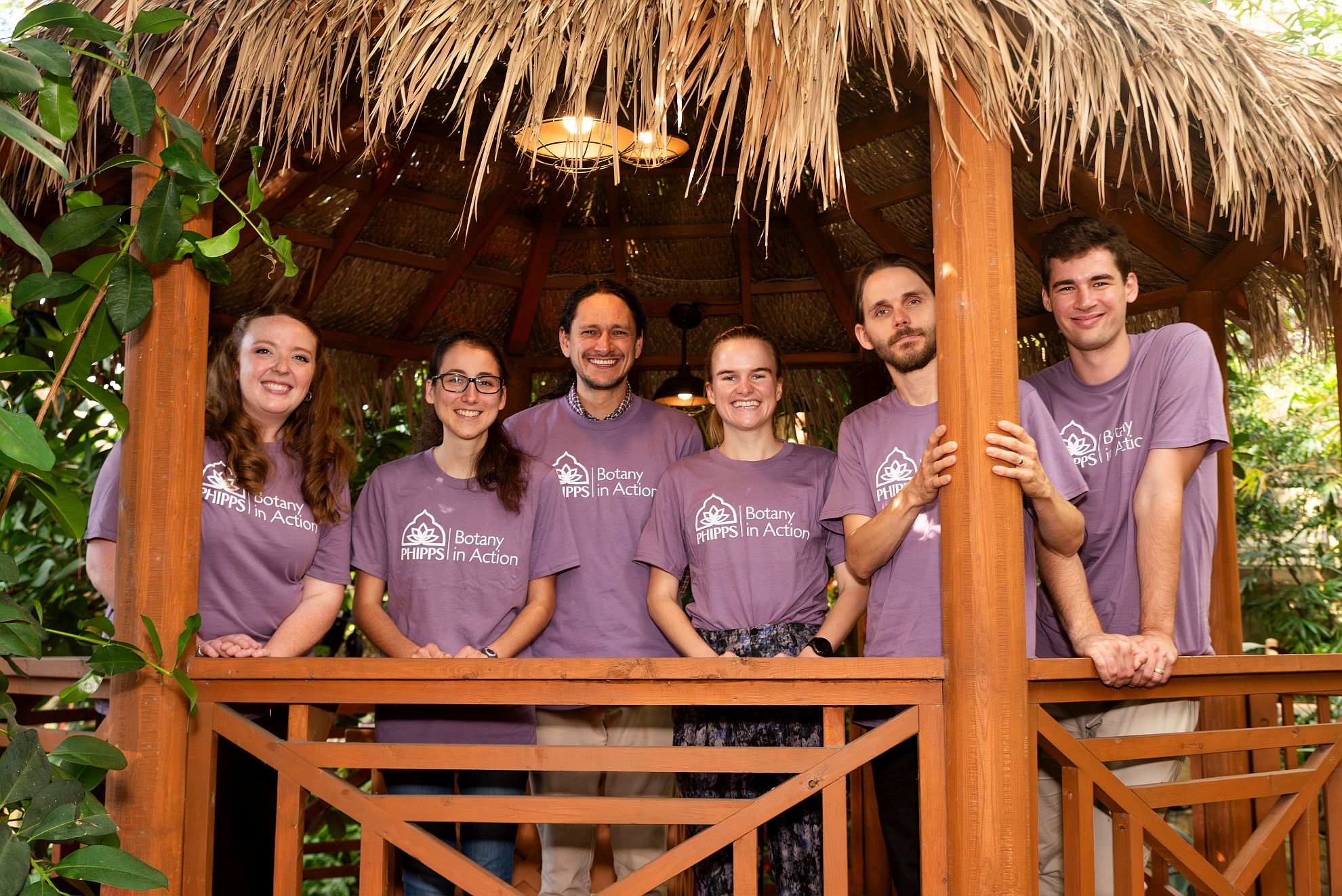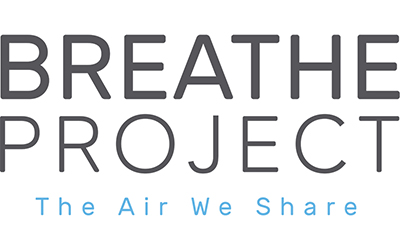Botany in Action 2026 Call for Proposals

The Botany in Action Fellowship program at Phipps Conservatory and Botanical Gardens fosters the development of the next generation of plant-based scientists who are committed, first, to excellent research, and second, to educational outreach. Open to PhD students enrolled at US graduate institutions and conducting plant-based scientific research, the program provides each fellow with: 1) $6,000 for use towards research and outreach related expenses at sites in the US or abroad*, 2) an all-expenses paid trip to Phipps, to engage in science outreach training and opportunities to translate and communicate their research to public audiences through written, visual and/or oral means, and 3) subsequent opportunities to connect their research with the public through programs, exhibits, and other outreach venues.
Download the 2026 Proposal PDF
Research Priority Areas (listed in no particular order):
Strong preference will be given to research focused either on southwest Pennsylvania and adjacent states or on tropical forests. In the tropical forest research area, for 2026, special consideration will be given to research focused on Panama.
The following topics are priority areas:
- Ethnobotany, with special interest in plant use for physical and/or psychological well-being
- Diversity and biocultural conservation and/or plant-based conservation, particularly in regional (southwest Pennsylvania and adjacent states) and tropical forests
- Landscape and brownfield restoration, particularly in plant-based ecosystem services
- Sustainable landscapes
- Interdisciplinary plant-based research at the intersection of human and environmental health
- Food systems science related to regenerative agriculture, traditional knowledge of diverse food plants, or underutilized crops for food security
Duration of Funding: A BIA Fellowship consists of one year of support for research funding and educational outreach, as well as life-long membership in a growing network of plant-based scientists connecting their research with the public. BIA Fellows are encouraged to re-apply to the program for continued funding for up to three years of support towards completion of their dissertation research. Note, continued funding is not guaranteed and is dependent on the Fellow’s previous use of funding, proven commitment to furthering their educational outreach, and funding availability. Additional funding after 3 years may be available on a case-by-case basis. All funding expires on Dec 31 of the calendar year it was received. Remaining funds after this date must be sent back to Phipps Conservatory.
Eligibility Requirements: All applicants must be:
- Enrolled in a PhD program at a US graduate institution (US citizenship is not required)
- Conducting plant-based research
- Able to travel to Pittsburgh, PA from a location within the US (costs will be reimbursed) for the duration of the Botany in Action Science Engagement Week, which will be September 24-27, 2026.
- Able to commit to monthly online outreach (e.g. podcast, blogging, vlogging, etc.) after Science Engagement Week.
- For previous fellows applying for renewed funding: clear, tangible outreach goals and outcomes in addition to research accomplishments from the previous year.
Proposal Review: Proposals are reviewed by members of Phipps’ Research/Botany in Action Science Advisory Committee. Reviewers are active scientists and laypersons with strong knowledge of or interest in botany, conservation, sustainability, and plant-based education and outreach. Proposals will be evaluated using similar criteria to NSF scientific merit and broader impact proposal review categories, as well as relevance to research priority areas for the 2026-27 year.
Proposal Deadline: All proposal materials must be received by 11:59 p.m. EST on Jan. 9, 2026.
Timeline: BIA Fellows will be announced by mid-March and funding will be disbursed in late March 2026.
The application package should convince reviewers the applicant a) possesses the knowledge and skills to successfully complete and publish the results of the proposed research and b) is committed to connecting their work with non-scientific audiences. A complete application includes the following three components:
1) Proposal: The required sections for the proposal are listed below in the order they should appear.
- Applicant Contact, University, Research Site, and Recommender Information, should make up the first page and include the applicant’s
- name, pronouns, mailing address, email and phone number
- university and department name and address
- research site location
- proposal title
- names, titles and affiliations of recommenders
- Proposal Title should also appear at the top of the second page.
- Two Abstracts (each 250 words maximum) describing the research and clearly labeled as follows:
- Scientific Abstract written in a manner that would accompany a scientific research proposal.
- Public Abstract written in a manner that summarizes and conveys the importance of the project to those with limited scientific backgrounds.
- Proposal Body (seven double-spaced pages maximum) including the following, clearly labeled, sections:
- Introduction, with the research’s significance for both science and the public highlighted.
- Objectives, including the questions and/or hypotheses addressed by the research.
- Study Site, Materials and Methods, including study subjects, methods, analyses and timeline.
- Detailed Educational Outreach Plan, describing how they will connect the research with the community in which they are conducting their research (if applicable) and the public. Please do not list mentoring undergraduates, academic conferences, or scientific publications as outreach. How will you reach out beyond academia?
- Literature Cited. Names, not numbers, should be used for citations (e.g., Smith 2000).
- Proposal Budget (one page maximum), itemized and describing fellowship funding request
2) Curriculum Vitae: The CV should include education, research, publications, presentations, grants received or pending, and relevant non-academic and synergistic experiences such as work for conservation non-profits or government agencies, and other outreach and educational activities.
3) Two Letters of Recommendation: One recommendation letter should be from the applicant’s research advisor and one letter from a person who has strong knowledge of the applicant’s motivation to enhance public scientific literacy. Each letter should include the recommender’s full contact information and a subject line stating the applicant’s name and whether the letter is in support of research or outreach capabilities of the applicant.
Note for Fellows Applying for Renewed Funding: Phipps has historically placed a high priority on renewing fellowships for up to three years, and we will continue that priority. However, as the grant heavily emphasizes the value of both research and outreach, we will expect fellows reapplying to have clear, tangible outreach goals outcomes and to be specific in the previous year’s research accomplishments, analyses, and potential paths forward.
The Proposal and CV must be saved together as a single WORD or PDF file, with the proposal appearing first. The file name should start with the applicant’s last name, followed by the term ‘BIA’, funding year pursued, and ‘App’ (e.g. Smith_BIA_2026_App.pdf). If submitting a PDF, please include an additional WORD file with Applicant Contact Information, University, Research Site, Recommender Information, Proposal Title and Two Abstracts. All application materials should be emailed to bia@phipps.conservatory.org with subject line ‘BIA 2026 application’ followed by applicant’s last name.
Each recommendation letter must be sent directly from the recommender. The letter should be saved as a PDF file and named as follows, with underscores between each section: applicant’s last name, ‘BIA’, funding year pursued, ‘Rec’, ‘R’ if supporting research or ‘O’ if supporting outreach, and recommender’s last name (e.g. Smith_BIA_2026_Rec_O_McGuire.pdf). These should be emailed to bia@phipps.conservatory.org.
Questions? Direct any questions to Dr. Maria Wheeler-Dubas, Science Education Program Manager at mwheeler-dubas@phipps.conservatory.org.
*Student is responsible for reporting award to the IRS and may be required to pay taxes depending on expenses the funds were used to cover.
** What is outreach? Outreach is sharing information beyond the scientific community; it is building relationships with those who can benefit from a researcher’s work; it is acknowledging that science communication is not “dumbing down” information; it is making information from one expert accessible to someone who is an expert in something else. Outreach is “reaching out” to schools, organizations and groups, libraries, parks, communities, etc. When you write your outreach section for this grant, keep in mind that a detailed, realistic outreach plan is just as important to reviewers as the proposed science. Be clear and specific in your goals, and only propose what you would actually intend to do. For example, a commonly proposed outreach activity is to “offer workshops across {applicant’s state} with various community organizations.” In that case, what are the specific learning goals of the workshop? Who are the community organizations you intend to partner with? Do you already have a relationship with them? Who is their audience? How will you deliver these workshops? Will you drive to the sites? If you are driving, did you request mileage funding to carry out your proposed idea? Please be specific, realistic, and intentional about this section.
Phipps’ mission is to inspire and educate all with the beauty and importance of plants; to advance sustainability and promote human and environmental well-being through action and research; and to celebrate its historic glasshouse
Photo © Kitoko Chargois




